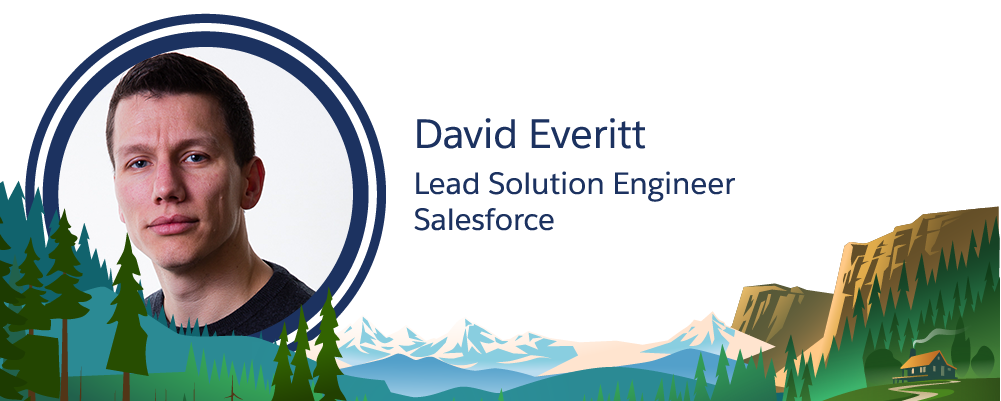Plan for a Successful Pro Bono Project
Learning Objectives
After completing this unit, you’ll be able to:
- Learn your organization’s mission and business.
- Assess your organization’s experience with Salesforce.
- Set clear expectations with your organization.
- Identify realistic goals for your pro bono project.
Move Slow to Go Fast

You’re eager to use your Salesforce superpowers to change the world, right? Before you swoop in to save the day or make any recommendations, we suggest taking it slow in the beginning. A little bit of planning upfront can save you and the organization you’re working with time and heartache later on. The initial planning meeting with your organization is the key activity of the planning phase. Schedule at least an hour with your organization to discuss your project’s goals.
You’ll learn more about what to cover in the initial meeting later in the unit. First, we have some homework for you.
Do Your Homework
Before the initial meeting, you’ll want to explore your organization’s website to get a sense of what they do, who they serve, and how they’re funded. Be sure to review the following information on your organization’s website:
- Mission and vision
- Leadership and board members
- Programs and services provided
- Annual reports and financials
- Newsletter and social media
If your organization’s website has stories about their constituents, you’re in luck! Stories and testimonials bring to life the organization’s work and can help you to really connect with their mission.
During the initial meeting and subsequent meetings, be sure to ask staff to describe their organization’s mission and work in their own words. You’ll be surprised how much more nuance you’ll get by asking staff from different departments. This will also help you to clarify what you’ve learned through your own research.
Be sure to make the most of your first meeting by sending pre-planning questions to your organization one or two weeks in advance. See our Resource Guide for Pro Bono Volunteers for sample questions to send.
Now that you’ve done your homework, you’ll want to get into the right mindset before the initial planning meeting.
Adopt a Customer Success Mindset

David Everitt, Lead Solution Engineer, Salesforce: “It's the simple stuff that will enable nonprofits to do a lot with Salesforce. The key is understanding exactly how their business works and taking time to get them comfortable working in the system.”
Adopting a customer success mindset means prioritizing your organization's long-term success above all else. For example, let’s say you really want to gain experience with Apex, but you know the organization won’t be able to sustain the code without you. Their success is your top priority, so you decide to use declarative tools (clicks, not code) to get the job done and train your organization on how to use them.
It also means playing the role of coach. You may be the first outside tech person your customer has ever encountered. Showing your organization how to make changes in Salesforce and offering a little encouragement can go a long way in building their confidence and enabling them to do even more awesome things with the platform.
Now that you’ve done your homework and adopted a customer success mindset, you’re ready to meet with your organization!
Understand the Big Picture

During the first meeting, you’ll want to clarify how the organization uses Salesforce to support its mission, operations, and strategic goals. You’ll also want to ask about the other systems that the organization uses to manage data and if they plan to replace any of these systems with Salesforce. Plus, you’ll want to get a sense of the organization’s tech fluency.
Here are a few questions you might ask during your initial meeting:
- What strategic goals or current priorities depend on your CRM solution?
- How do you use Salesforce now? What processes do you manage within Salesforce?
- What other systems do you use to manage data and processes?
- What do you want to do with Salesforce in the future?
- Who uses Salesforce and how comfortable are they using it?
- What’s your organization’s experience with technology in general?
Responses to these questions should give you a sense of the big picture, including where they are today with the platform and where they want to be tomorrow, as well as the tech capabilities of the organization. Understanding the big picture is crucial for helping your organization prioritize their many needs.
Once you have a broad understanding of the organization’s priorities, you’ll be able to narrow and focus the goals of your project on what matters the most. Ask these questions to define the project goals:
- What are your main objectives for this pro bono project?
- What processes do you want to improve?
- What problems and pain points do you hope to resolve with this project?
Set Clear Expectations
Just like any project you’ve done for your day job, you’ll want to start your pro bono project off right by aligning on project goals, timeline, and scope. Be clear about what you can do for your organization and what is outside your expertise.
The key is to be honest about your availability, what you can deliver, and when you can deliver it. If you can only commit to an hour or two a week, that’s fine. Just make sure to communicate your availability to the nonprofit. If you’re going to miss a deadline or have something come up unexpectedly, make sure to communicate it to them, just like you would with your team at work or a paying client.
Being a pro bono superhero means meeting the expectations that you set for the organization. So, please ask yourself these questions before you start your pro bono project:
- What am I comfortable doing on the platform and what am I not?
- How much time can I commit to this project and for how long?
- Do I have any major projects or trips coming up that might impact my availability?
- Will I be available to answer questions after the project is complete? If so, for how long?
You should also be aware of any major events that your organization may have during your project. This might include things like a fundraising gala, board meeting, or major conference. These are things that could significantly affect your project timeline.
Identify Project Stakeholders

Part of setting clear expectations is getting clear on roles and responsibilities for your project. During your initial meeting, you’ll want to clarify the following:
- Who is your main point of contact for this project?
- Who is the executive sponsor?
- Who else will be involved with the project?
- What is each person responsible for?
- How comfortable are they using Salesforce?
Keep in mind that your organization may not have a full-time, dedicated system admin. If this is the case, you’ll need to figure out who will play the system admin role on your project.
Confirm Logistics and Next Steps
Before you wrap up the meeting, you’ll want to confirm a few project logistics with your organization. We recommend scheduling regular check-in meetings with homework in-between to keep the project moving forward. At a minimum, discuss the following with your organization:
- Who needs to be kept informed on progress?
- What’s the best way to keep everyone informed?
- How often do you need to communicate and how?
Also, ask your organization to grant you the lowest level of access required to complete the project. Be sure to consider the following:
- Will you be able to complete the entire project in a sandbox?
- Do you need access to the customer’s data?
- Does the organization have any relevant documentation they can share now?
After going through your initial planning call, you should have a basic understanding of what your organization wants to accomplish. In the next unit, you’ll learn how to set realistic project goals and document business processes and user requirements.